Nayi Chetna 3.0 – PahalBadlaav Ki
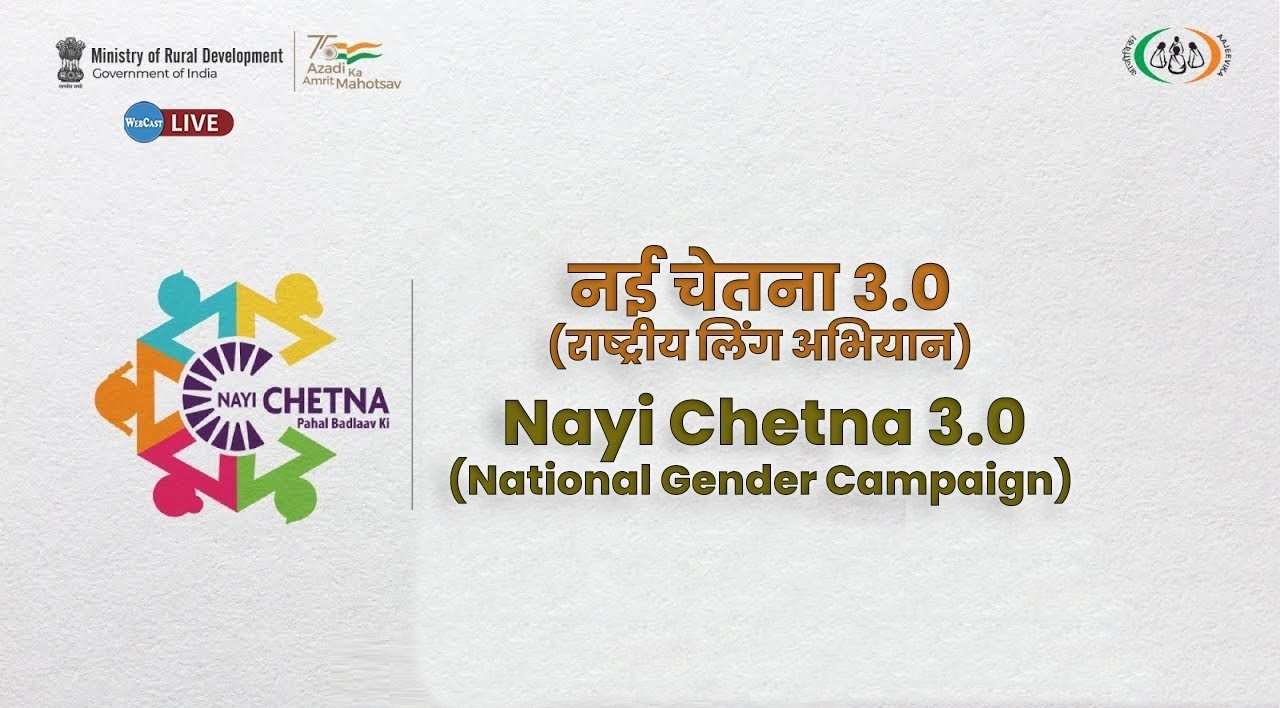
- 26 Nov 2024
In News:
Union Minister Shri Shivraj Singh Chouhan launches the third edition of ‘Nayi Chetna – PahalBadlaav Ki’ a month-long national campaign against gender-based violence in New Delhi.
Key Highlights:
- Organized by: Deendayal Antyodaya Yojana – National Rural Livelihoods Mission (DAY-NRLM) under the Ministry of Rural Development.
- Led by: DAY-NRLM’s extensive Self-Help Group (SHG) network.
- Aim of the Campaign: Raise awareness and encourage grassroots-level action to combat gender-based violence.
- Campaign Slogan: “EkSaath, EkAwaaz, HinsaKeKhilaaf” (United Voice Against Violence).
- Approach:
- Adopts a "whole-of-government" approach with collaboration from 9 key ministries:
-
- Ministry of Women and Child Development
- Ministry of Health and Family Welfare
- Department of School Education and Literacy
- Ministry of Home Affairs
- Ministry of Panchayati Raj
- Ministry of Social Justice and Empowerment
- Ministry of Youth Affairs and Sports
- Ministry of Information and Broadcasting
- Department of Justice
- Key Objectives:
- Raise awareness about all forms of gender-based violence.
- Mobilize communities to demand accountability and action.
- Facilitate access to timely intervention and support systems.
- Empower local institutions to take action against violence.
- Goals for Nayi Chetna 3.0:
- Generate widespread awareness about gender-based violence.
- Foster collective action at the grassroots level.
- Drive convergence among government ministries and community stakeholders.
- Create a sustainable and informed movement for gender equality and women’s empowerment.
UNICEF’s State of the World’s Children 2024 (SOWC-2024) Report
- 21 Nov 2024
In News:
The world is facing an unprecedented crisis with nearly half of all children – about 1 billion – living in countries that face a high risk of climate and environmental hazards, the UNICEF’s State of the World’s Children 2024 (SOWC-2024) report, said.
Key Highlights:
Environmental Hazards and Children’s Health:
- Children face an increasingly unpredictable and hazardous environment due to climate change, environmental crises, and frontier technologies.
- Nearly 1 billion children live in countries facing high risks from climate and environmental hazards.
- Children’s developing bodies are especially vulnerable to pollution, extreme weather, and environmental hazards.
- Air pollution, rising temperatures, and extreme weather events harm children's respiratory health, increase the spread of diseases like malaria and dengue, and impact food security and access.
Impact of Climate Change:
- Climate destabilization, biodiversity loss, and pollution are intensifying globally.
- Climate-related disasters (e.g., floods) affect water supplies, causing waterborne diseases, a leading cause of death in children under five.
- Extreme weather events, such as floods, can cause trauma, anxiety, and displacement for children.
- By the 2050s, more children will be exposed to extreme climate hazards compared to the 2000s.
- School closures, affecting 400 million children since 2022 due to extreme weather, disrupt education and hinder economic growth.
Projections for Child Survival and Life Expectancy:
- Newborn survival rates: Projected to rise by nearly 4 percentage points to over 98% globally by the 2050s.
- Probability of surviving to age 5: Expected to increase to 99.5%.
- Life expectancy: Expected to rise to 81 years for girls and 76 years for boys by the 2050s.
Child Population Trends by 2050:
- Global child population expected to stabilize at 2.3 billion by the 2050s.
- South Asia, Eastern/Southern Africa, and West/Central Africa will have the largest child populations, facing significant challenges in meeting children’s basic needs.
- These regions also face climate risks, inadequate digital infrastructure, and socio-economic challenges.
Technological Advancements:
- Artificial Intelligence (AI), neurotechnology, renewable energy, and vaccine breakthroughs could significantly improve childhood well-being.
- Digitalization: While it can empower children, it also exposes them to online risks, including sexual exploitation and abuse.
Socio-Economic Conditions and Inequality:
- 23% of children projected to live in low-income countries by 2050, a significant increase from 11% in the 2000s.
- GDP per capita in East Asia, Pacific, and South Asia expected to more than double from the 2020s to the 2050s.
- Growing inequalities between high- and low-income countries, particularly in terms of digital access and infrastructure.
Urbanization and Child Welfare:
- By the 2050s, nearly 60% of children globally will live in urban areas, up from 44% in the 2000s.
- Ensuring healthier and more secure urban environments is critical for improving future childhoods.
- Over 95% of people in high-income countries are connected to the internet, compared to just 26% in low-income countries, exacerbating inequalities.
Key Takeaways:
- Children are facing a more hazardous environment than ever before, influenced by climate change, technological developments, and demographic shifts.
- Proactive measures are needed to mitigate environmental risks, promote digital inclusion, and ensure equitable access to resources and opportunities for children globally.
Oxytocin
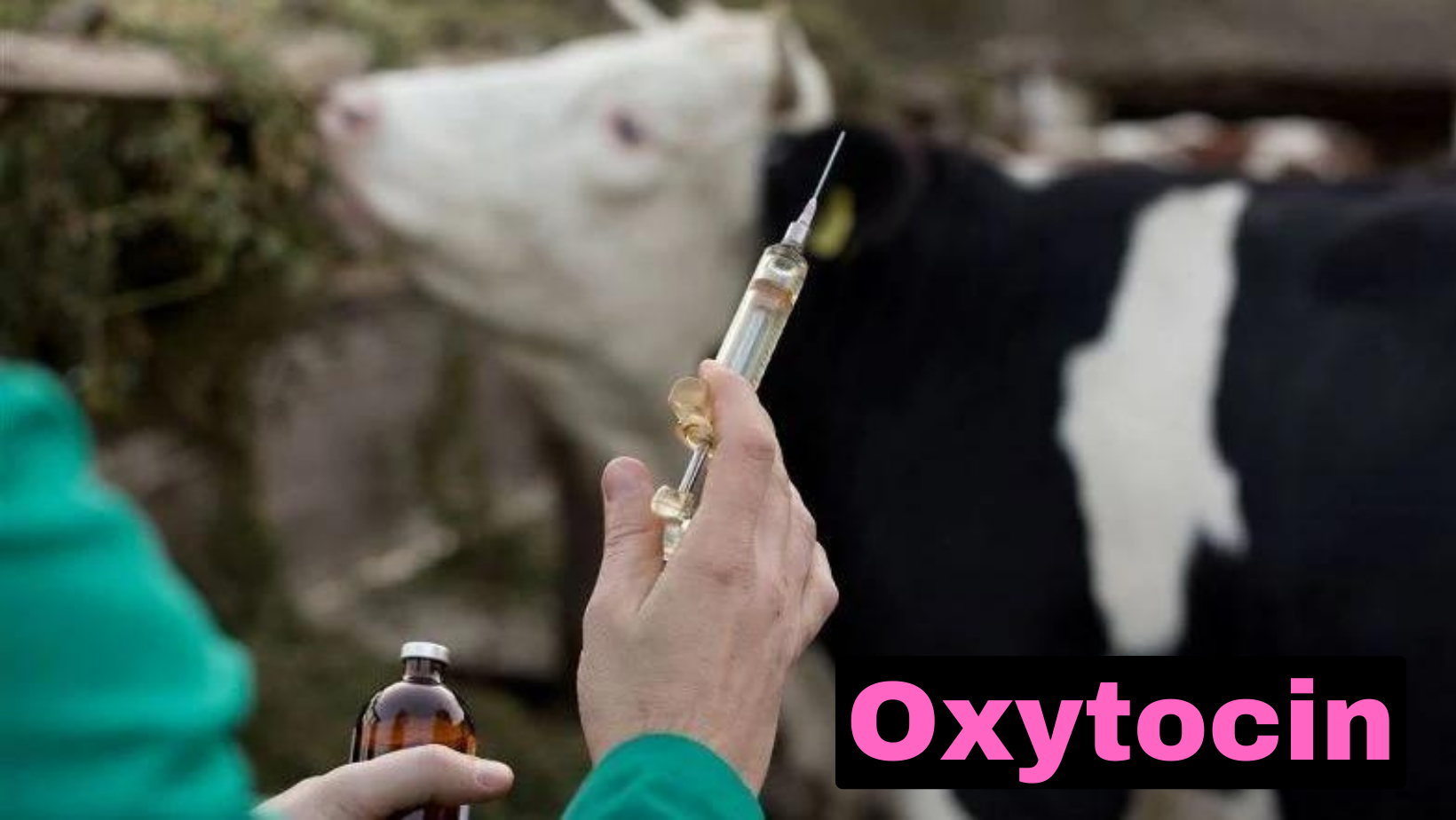
- 04 May 2024
Why is it in the News?
Recently, the Delhi High Court called for action against the 'rampant use of Oxytocin' in dairy colonies.
What is Oxytocin?
- Oxytocin also known as the ‘love hormone’ is secreted by the pituitary glands of mammals during sex, childbirth, lactation, or social bonding.
- It is normally produced in the hypothalamus and released by the posterior pituitary.
- It can be chemically manufactured and sold by pharma companies for use during childbirth.
- It is administered either as an injection or a nasal solution.
Side effects of oxytocin:
- A few side effects of oxytocin in humans would include:
- Allergic reactions on the skin like rashes Itching, hives Swelling, lips, tongue, or throat
- Changes in the heart rhythm causing fast or irregular heartbeat, dizziness, feeling faint or lightheaded
- Pain in the chest
- Breathlessness and trouble breathing
- Nausea Vomiting
- Severe headache
- Blurred vision
- Pounding in the neck or ears
- Jaundice Seizure
- According to doctors, prolonged use of oxytocin injections also causes fertility disorders like poor oestrus signs, reduced lactation period, lower conception rate, and high embryonic mortalities.
- Oxytocin injection given to cattle to boost the delivery of milk production is one of the reasons for the early onset of puberty among girls, the development of breasts in males, and the lack of testosterone production due to hormonal imbalance.
Affects fertility in both men and women:
- Milk adulterated with oxytocin is to be avoided by pregnant women as it can cause abortion and babies may be born with deformities.
- It also increases the risk of haemorrhage in mothers after birth and can also inhibit breastfeeding.
- However, boiling milk can help eliminate traces of oxytocin.
What are Hormones?
- Hormones are special chemicals produced by glands in the endocrine system that act as messengers in the body, regulating various physiological processes like growth, metabolism, reproduction, and mood.
- They travel through the bloodstream to target organs and tissues, where they exert their effects by binding to specific receptors and influencing cellular activity.
Patachitra Painting
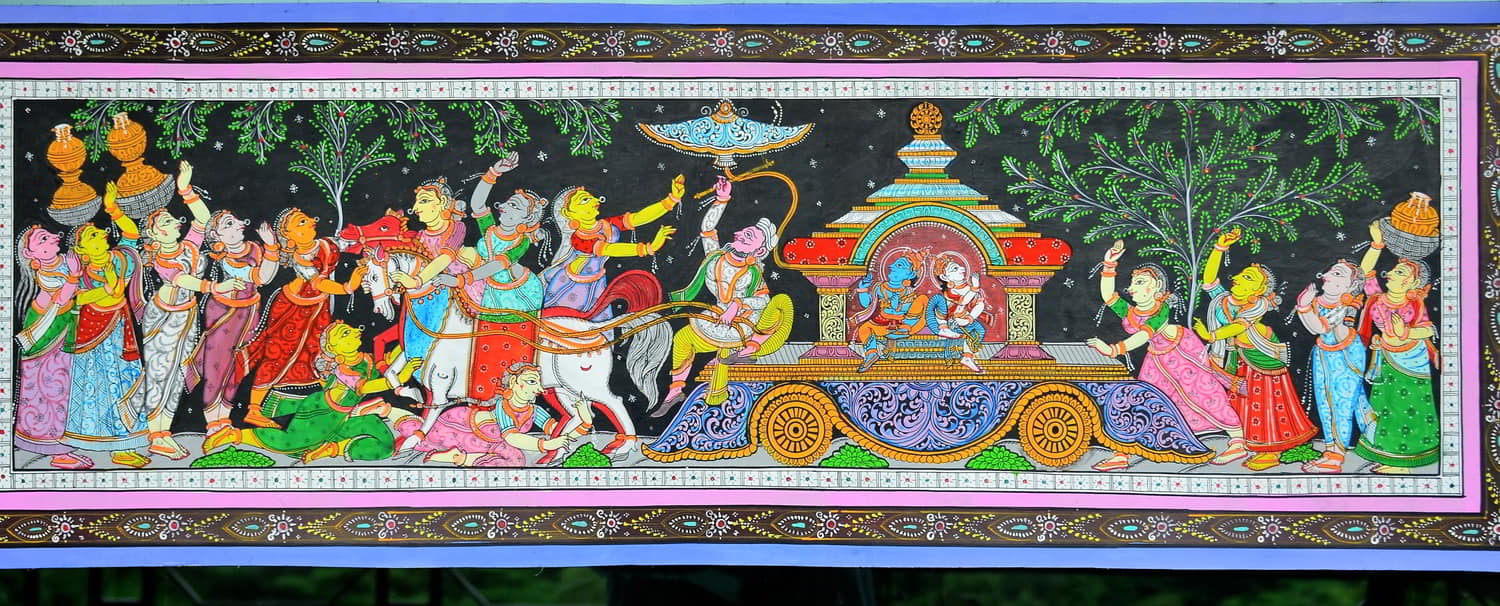
- 01 May 2024
Why is it in the News?
The first-generation women patachitra artists of the village sell their work online & are recognized the world over, encouraging future generations to stay in the profession.
About Patachitra Painting:
- Pattachitra style of painting is one of the oldest and most popular folk art forms of Odisha.
- Pattachitra- literally meaning ‘Picture on cloth canvas’ is a traditional treasure that has mesmerized the common man.
- The Patachitras, the intricate and artistic folk art, of Orissa are icon paintings that include wall paintings, manuscript paintings, palm-leaf etchings, and paintings on cloth, both cotton and silk.
- Pattachitra paintings are made of tussar silk.
- The origin of the paintings is traced to the 8th century A.D., from the fragmented pieces of evidence of cave paintings in Khandagari, Udaigiri, and Sitabhinji.
- Having a reference in the earliest known treatise on a painting called ‘Chitralakshana’, this art form finds its strong roots in the traditions of Lord Jagannath, the presiding deity of Odisha.
- These paintings have a ritualistic significance even to this day.
- The picturesque village of Raghurajpur, on the banks of river Bhargavi is well known for this artistry, along with its neighbours Puri, Dandasahi, and Khasposak.
- The Pattachitra artists are called ‘Chitrakaars’ (Painters), mainly belonging to the Maharana and Mahapatra castes.
- The creation of the Pattachitra paintings is a disciplined art form, and the chitrakars maintain rigidity in their use of colours and patterns, restricting the colours to a single tone.
Making of Paintings:
- Preparing the paints is perhaps the most important part of the creation of Pattachitra, engaging the craftsmanship of the chitrakars in using naturally available raw materials to bring about indigenous paints.
- The gum of the Katha tree is the chief ingredient and is used as a base for making different pigments, on which diverse raw materials are mixed for diverse colours.
- Powdered conch shells, for instance, are used for making a white pigment, while lamp soot is used for a black pigment.
- The root of the keya plant is usually used for making the common brush, while mouse hair is used on the requirement of finer brushes, to be attached to wooden handles.
United Nations Entity for Gender Equality and the Empowerment of Women (UN Women)
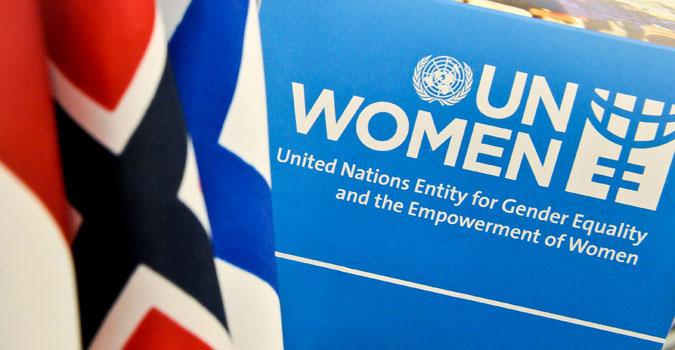
- 18 Apr 2024
Why is it in the News?
According to a recent report by UN Women, six months into the war, Gaza is facing a humanitarian crisis disproportionately impacting women and girls.
What is UN Women?
- Founded in 2010 by the United Nations General Assembly as part of the UN reform agenda.
- Merges resources and mandates to create a more significant impact on gender equality and women's empowerment.
- Serves as a global advocate for women and girls, addressing their needs and accelerating progress.
Key Roles:
- Supports intergovernmental bodies like the Commission on the Status of Women in developing policies, global standards, and norms for gender equality.
- Assists member states in implementing these standards and offers technical and financial support upon request.
- Builds effective partnerships with civil society organizations.
- Leads and coordinates the UN system's work on gender equality while promoting accountability through regular monitoring of progress.
Sustainable Development Goals (SDGs):
- Works globally to realize the SDGs for women and girls.
- Promotes women's equal participation in all aspects of life.
Country-level Support:
- Collaborates with government and non-governmental partners in countries that request assistance.
- Helps implement policies, laws, services, and resources to advance gender equality.
Grant-making Funds:
- Fund for Gender Equality: Provides grants to support innovative, high-impact programs by government agencies and civil society groups.
- UN Trust Fund to End Violence against Women: Finances initiatives that address violence against women and girls.
Commission on the Status of Women (CSW):
- A global policy-making body focused on gender equality and women's advancement.
- Operates as a functional commission of the United Nations Economic and Social Council (ECOSOC).
Information and Advocacy:
- Regularly provides information on women's rights issues to the General Assembly, ECOSOC, and the Security Council.
- Maintains the UN Secretary-General's database on violence against women, tracking measures taken by UN Member States and organizations.
- UN Women plays a vital role in advancing gender equality and women's empowerment worldwide by providing crucial support, resources, and advocacy through its various initiatives and collaborations.
India ranks 113 out of 190 countries in the World Bank’s legal gender gap index
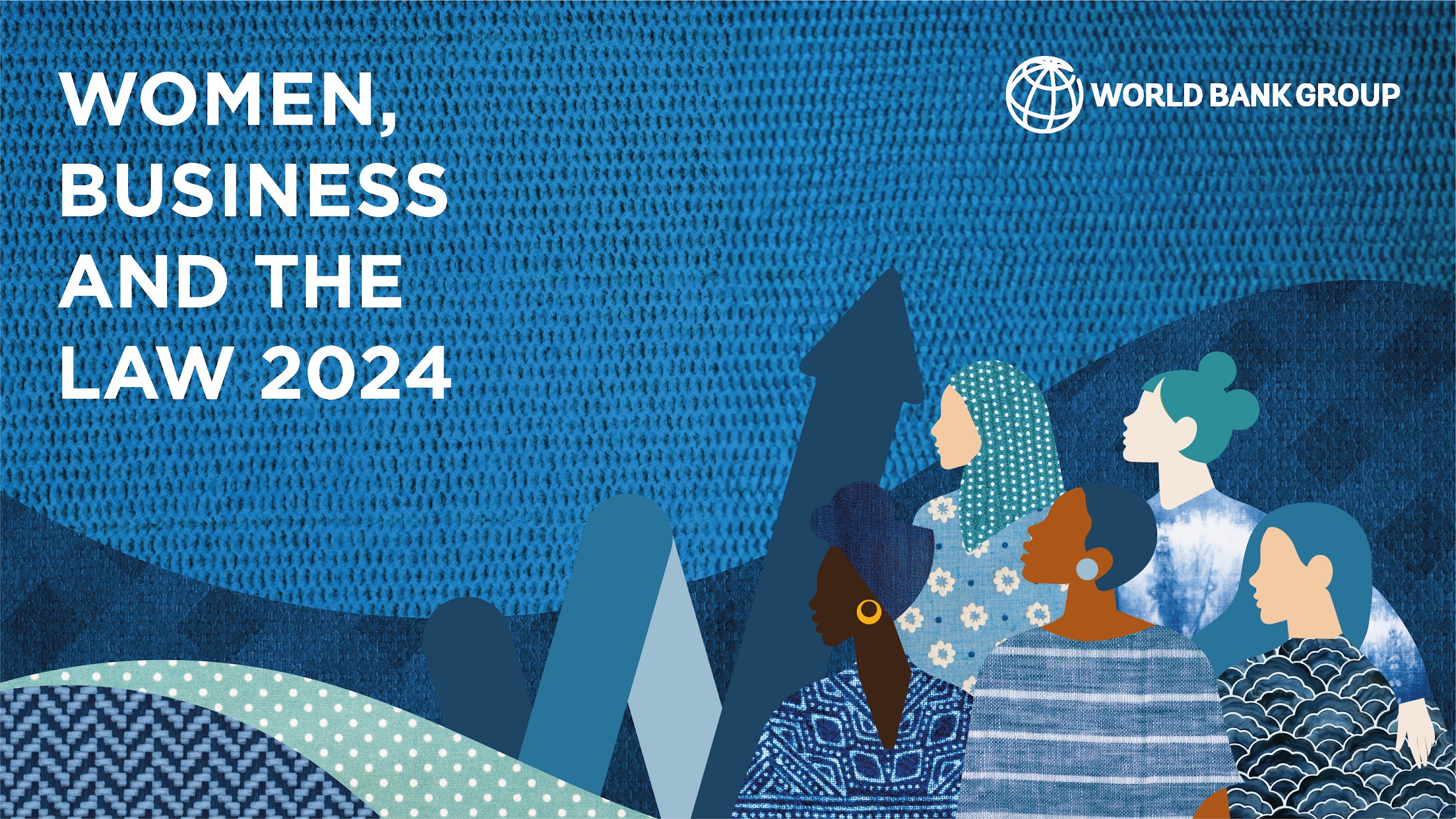
- 05 Mar 2024
Why is it in the News?
India's ranked improved to 113 out of 190 countries in the World Bank’s Women, Business and Law index, according to the 10th edition of the report released Monday.
About Women, Business and Law Index:
- The "Women, Business and the Law (WBL)" index is a project of the World Bank Group, specifically designed to measure the legal environment for women's economic opportunities across 190 economies.
- It's distinct from a general "Gender Equality Index" as it focuses specifically on legal frameworks and their impact on women's involvement in business and professional life.
What does it Measure?
- The WBL index assesses legal frameworks across eight indicators:
- Mobility (freedom of movement)
- Workplace (discrimination, maternity leave, etc.)
- Pay (equal pay for equal work)
- Marriage (property rights, domestic violence)
- Parenthood (parental leave, child custody)
- Entrepreneurship (starting and running a business)
- Assets (ownership and inheritance)
- Pension (access to and benefits)
- Scoring: Each indicator is scored on a scale of 0 to 100, with 100 representing the highest level of legal rights and protections for women.
- The overall score for a country is the average of these eight indicators.
- Latest version: The latest edition is "Women, Business and the Law 2024", released in October 2023.
- This version also introduces two new indicators:
- Safety (addressing violence against women)
- Childcare (availability, affordability, and quality)
Highlights of the Report:
- Women spend an average of 2.4 more hours a day on unpaid care work than men—much of it on the care of children.
- Only 62 economies—fewer than a third—have quality standards governing childcare services, which has an adverse impact on the employment opportunity of women as mothers with young children have their battles to pick.
- Women face hindrances in areas such as entrepreneurship as just one in every five economies mandate gender-sensitive criteria for public procurement processes, meaning women are deprived of significant economic opportunities.
About India:
- According to the 10th edition of the Women, Business and Law index, India ranks 113 out of 190 countries in the Index.
- The addition of Safety and childcare as indicators in the new index is believed to have improved India’s ranking slightly.
- The index shows that in India, women enjoy 60% of the legal rights compared to men, which is lower than the global average of 64.2%, but much higher than the 45.9% of the legal protections compared to men.
- Over the years, India’s score has remained constant at 74.4%, whereas a total of 14 countries around the world, including Denmark, Canada, and Finland, score a perfect 100 in the legal framework score.
- Some of the less developed countries like Ethiopia, Namibia, and even Burundi have better scores than India.
- India’s performance is much lower in providing supportive frameworks, such as programs, services, budgets, procedures, inspections, and sanctions for non-compliance with quality standards.
- Only 54.2% of the supportive frameworks needed were established in the country.
Employer Rating Survey to Assess Women Participation in Workforce (Business Standard)
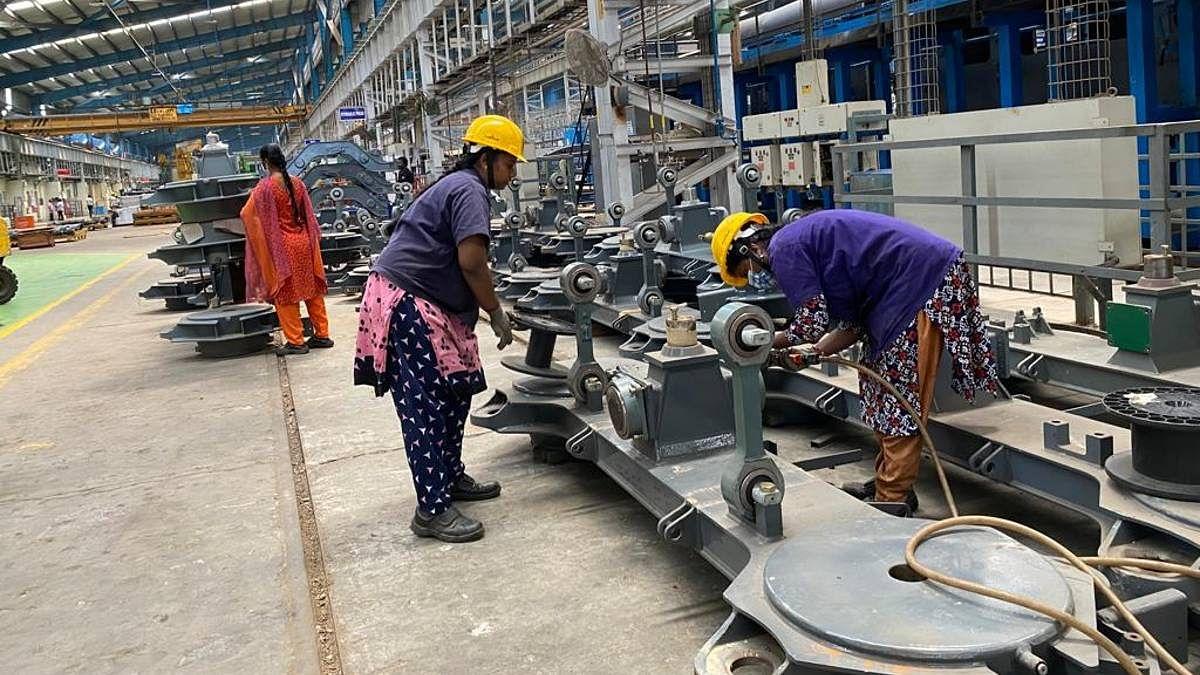
- 31 Jan 2024
Why is it in the News?
To bolster the representation of women in the workforce and advance gender equality, various ministries of the central government issued a series of advisories and surveys on Tuesday, aimed at industries and employers.
About the Survey:
- This survey aims to evaluate the prevalence of women-friendly practices across the nation's workplaces.
- The government is collecting information on several key aspects, including the establishment of internal complaints committees (ICC) for preventing sexual harassment, the provision of childcare facilities, ensuring pay equity, offering flexible or remote work options for women, and providing safe transportation during late hours.
- Additionally, various ministries of the Central government have issued advisories to enhance women's representation in the workforce.
Factors Affecting Low Women Workforce Participation:
- Cultural and Social Norms: Traditional gender roles and societal expectations often discourage women from pursuing full-time employment due to responsibilities for caregiving and homemaking, limiting their participation in the workforce.
- Educational Barriers: Limited access to quality education can hinder women from acquiring the necessary skills and qualifications for certain jobs, further reducing their workforce participation.
- Gender Pay Gap: Disparities in wages between men and women discourage women from entering or remaining in the workforce, contributing to lower participation rates.
- Structural Constraints: India's manufacturing and service sectors often have rigid structures that limit employment opportunities, particularly in the informal sector where many women work.
- Security Concerns: Instances of sexual harassment in the workplace create safety concerns for women, acting as a barrier to their participation in the labour force.
Government Initiatives Supporting Women's Empowerment:
- Code on Wages, 2019: Ensures equal pay for equal work without discrimination based on gender, fostering fairness in wage practices across establishments.
- Code on Occupational Safety, Health And Working Conditions (OSH), 2020: Proposes amendments to improve employment conditions for women workers, particularly in above-ground mines, ensuring their safety and well-being.
- Maternity Benefit Act, 2017: Enhances maternity benefits and fosters a healthier work environment for pregnant and nursing women, promoting their well-being and work-life balance.
- Rashtriya Mahila Kosh (RMK): A national organization offering microfinance services to empower economically disadvantaged women, supporting their livelihood projects and economic independence.
- National Rural Livelihoods Mission (NRLM): Focuses on creating sustainable self-employment opportunities for rural women through skill training, capacity building, and financial assistance, enabling them to engage in income-generating activities.
- MGNREGA (Mahatma Gandhi National Rural Employment Guarantee Act): Guarantees 100 days of wage employment annually to rural households, actively encouraging women's participation and ensuring equitable employment opportunities.
Way Forward
Continued government initiatives aimed at empowering women in the workforce through skill development and expanded employment opportunities have yielded positive results, as evidenced by the Periodic Labour Force Survey (PLFS) released by the Labour Bureau in 2023. This survey indicated a notable increase in women's participation, rising from 23.3% in 2017-18 to 37% in 2022-23.
AISHE report shows higher enrollment of women in higher education for 8 consecutive years (Indian Express)
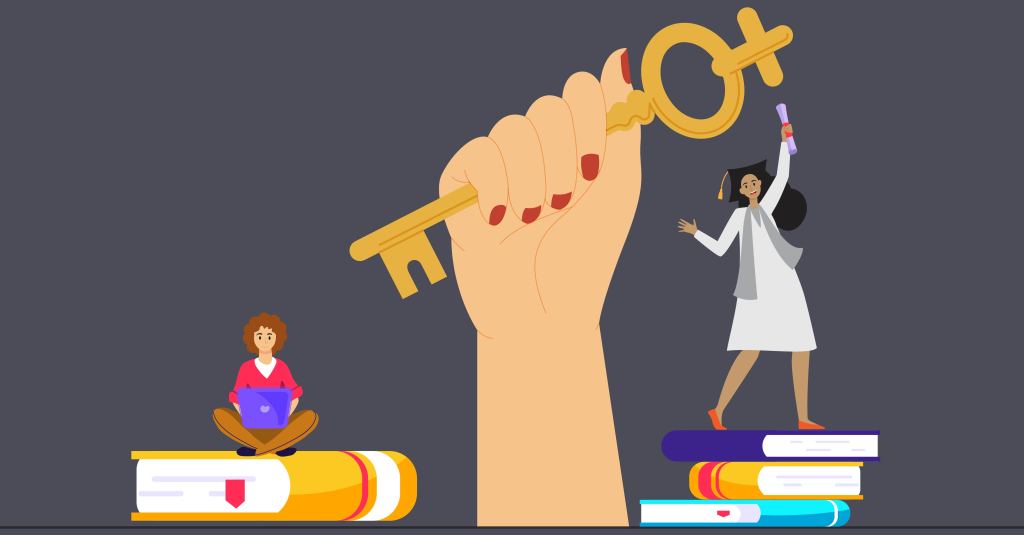
- 27 Jan 2024
Why is it in the News?
In the last eight years, more women have enrolled in higher education compared to men, according to the 2021-22 All India Survey on Higher Education (AISHE) released recently.
Major Highlights of the AISHE Report 2021-22:
- The All India Survey on Higher Education (AISHE) for 2021–2022 has recently been released, and it highlights a notable change in enrolment trends.
- Women have enrolled in higher education at a higher rate than men during the last eight years, which is a significant step toward gender parity in academic fields.
Women Lead the Surge:
- According to the AISHE report, women now constitute 55 percent of the total increase in higher education enrollment, accounting for a staggering 91 lakh individuals since the academic year 2014-15.
- The latest statistics indicate that out of the overall enrollment of 4.33 crore, 48 percent, or 2.07 crore, are women—a marginal uptick from the 2.01 crore recorded in the previous academic year.
- The trend, characterized by a continuous surge in female enrollment since 2014-15, is particularly noteworthy.
- The report highlights an 18.7 percent increase in the enrollment of women from 2017-18 to 2021-22, showcasing a consistent upward trajectory.
Narrowing the Gender Gap:
- The gender gap in higher education is steadily narrowing, with the science stream standing out as a domain where women are making significant strides.
- Notably, 52.1 percent of the 57.18 lakh students enrolled in science at the undergraduate, postgraduate, MPhil, and PhD levels are women.
- The undergraduate level alone witnesses 51 percent of women in the science stream.
- However, disparities persist in certain disciplines, such as engineering and technology, where female enrollment lags significantly behind.
- The AISHE survey reveals that of the total students in undergraduate engineering programs, only 11.3 lakh are females, while 27.6 lakh are males.
- In addition to undergraduate programs, the report sheds light on postgraduate and PhD levels, showcasing a remarkable 61.2 percent of women in postgraduate science programs and a significant 62 percent representation in PhD programs in the sciences.
- State-wise Enrolment: The top 6 states in terms of student enrollment are Uttar Pradesh, Maharashtra, Tamil Nadu, Madhya Pradesh, West Bengal, and Rajasthan, constituting 53.3% of total enrollment.
- Number of Foreign Students: There are 46,878 foreign students enrolled in higher education, with the highest share from Nepal (28%).
- Teaching Staff in Higher Education: The total number of faculty/teachers in 2021-22 is 15.98 lakh, with about 56.6% male and 43.4% female, showing an increase of 46,618 teachers over 2020-21.
- This emerging trend is not only indicative of changing societal dynamics but also underlines the need for continued efforts to foster inclusivity and equal opportunities within the realm of higher education.
- The report serves as a testament to the progress made while emphasizing the areas that still require attention and intervention.
About the All India Survey on Higher Education (AISHE) Report:
- The All India Survey on Higher Education serves as the primary source of comprehensive data regarding the state of higher education in India.
- Published by the Ministry of Education, this survey has been ongoing since 2011, covering all higher educational institutions across the country.
- It gathers detailed information on various aspects including student enrollment, faculty data, infrastructure, and finances.
- The report relies on voluntary data submission by higher education institutions listed on the aishe.gov.in portal, with the accuracy of the data overseen by the respective institution's Nodal Officers.
Why Rural India Needs Women Drone Pilots? (Indian Express)
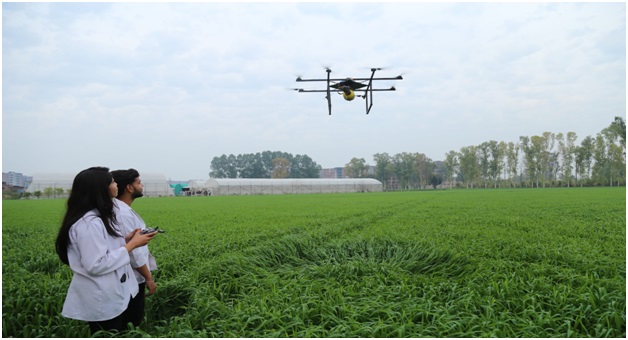
- 12 Dec 2023
Why is it in the News?
The NAMO Drone Didi Scheme provides new work opportunities to women and makes them the backbone of the rural economy.
What is the NAMO Drone Didi Scheme?
- The Prime Minister has recently approved the Central Sector Scheme (NAMO Drone Didi Scheme) for providing Drones to the Women Self Help Groups (SHGs), with an outlay of Rs. 1261 Crore.
- The scheme aims to provide drones to 15,000 selected Women SHGs during the period 2023-24 to 2025-2026 for providing rental services to farmers for agriculture purposes.
- The scheme seeks to empower women Self Help Groups (SHGs) and bring new technologies through drone services in the agriculture sector.
The highlights of this scheme are as follows:
- Departments involved: The scheme converges the resources and efforts of the Department of Agriculture & Farmers Welfare (DA&FW); Department of Rural Development (DoRD); Department of Fertilizers (DoF); Women SHGs and Lead Fertilizer Companies (LFCs).
- Identification of SHGs: The women SHGs would be identified from the total 89 lakh SHGs formed under the Deendayal Antyodaya Yojana.
- Financial Assistance:
- Central Financial Assistance covering 80% of drone costs up to a maximum of Rs. 8 Lakh will be provided.
- The remaining amount can be raised through the National Agriculture Infra Financing Facility (AIF) with a provision of interest subvention @ 3% on the AIF loan.
- Training:
- One of the members of SHGs will be trained in drone piloting skills and agriculture purposes of nutrient and pesticide application.
- Another member will be trained as a drone technician.
- This will allow them to not just operate the drone but also repair and maintain it.
- Nano Fertilizers: The scheme also promotes the use of Nano Fertilizers like Nano Urea and Nano DAP through drone services.
- Opportunities for Start-ups: The scheme not only empowers women but also opens avenues for dynamic start-ups in the field of drone aeronautics, tapping into significant untapped potential in this emerging sector.
Significance of the NAMO Drone Didi Scheme:
- Empowering Rural Women: Fosters technological empowerment of rural women, positioning them as the backbone of the rural economy.
- Places drone technology in the hands of women pilots from Self-Help Groups (SHGs).
- Modernizing Agricultural Practices: Addresses the imperative to modernize agricultural practices.
- Aims to elevate agricultural productivity through cutting-edge technology, contributing to a new agricultural revolution.
- Job Opportunities in Drone Aeronautics: Creates opportunities in the emerging field of drone aeronautics with substantial untapped potential.
- Opens avenues for rural women as pilots, mechanics, and spare-part dealers.
- Efficient Fertigation System Development: Facilitates the development of an efficient fertigation system.
- Introduces innovative liquid fertilizers like Nano Urea and Nano DAP with foliar application.
- Time-Efficient Spraying System: Automation of the spraying system through agri-drones ensures a time-saving and efficient application system.
- Equitable Agrarian Family Culture: Contributes to making the agrarian family culture more equitable and robust.
